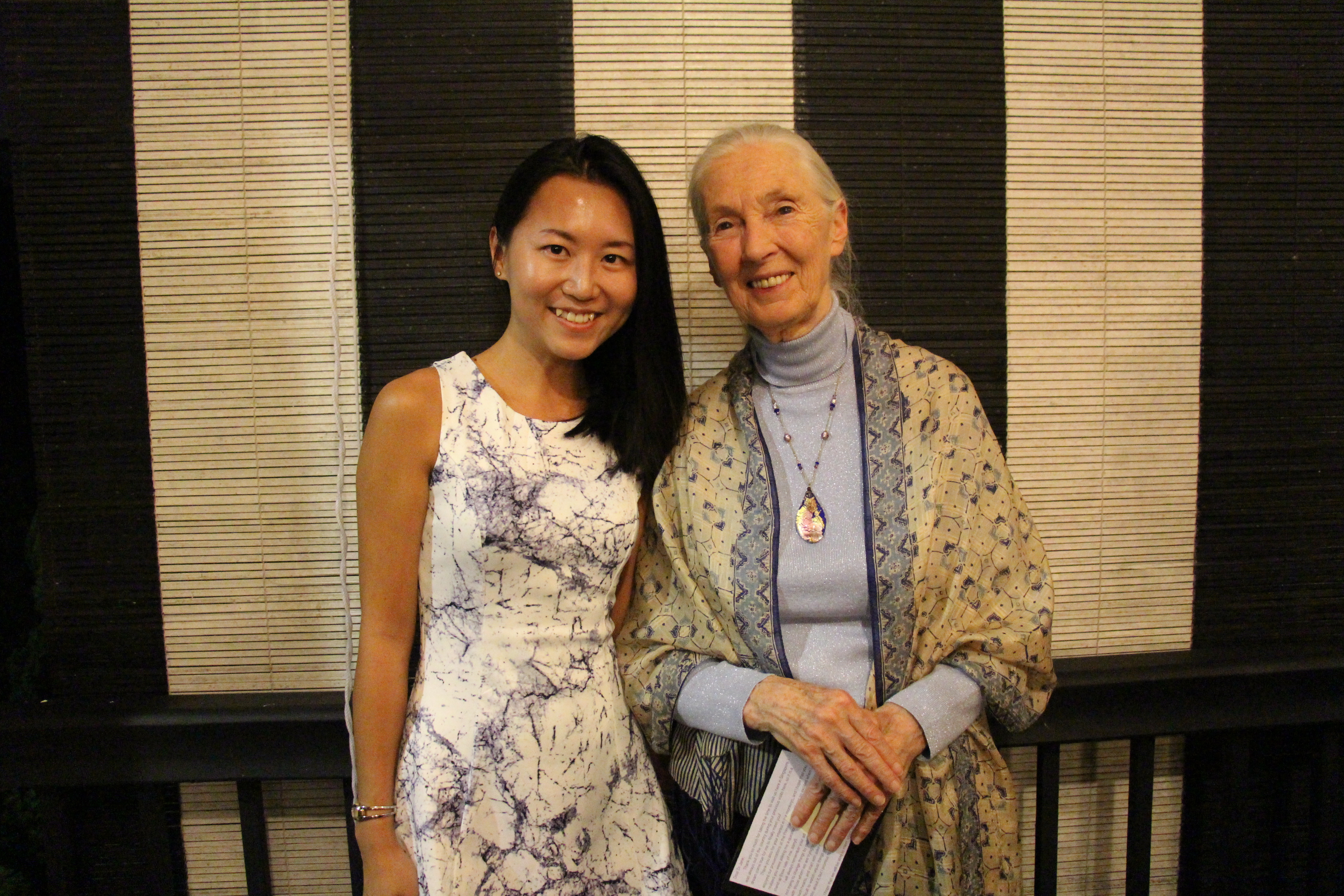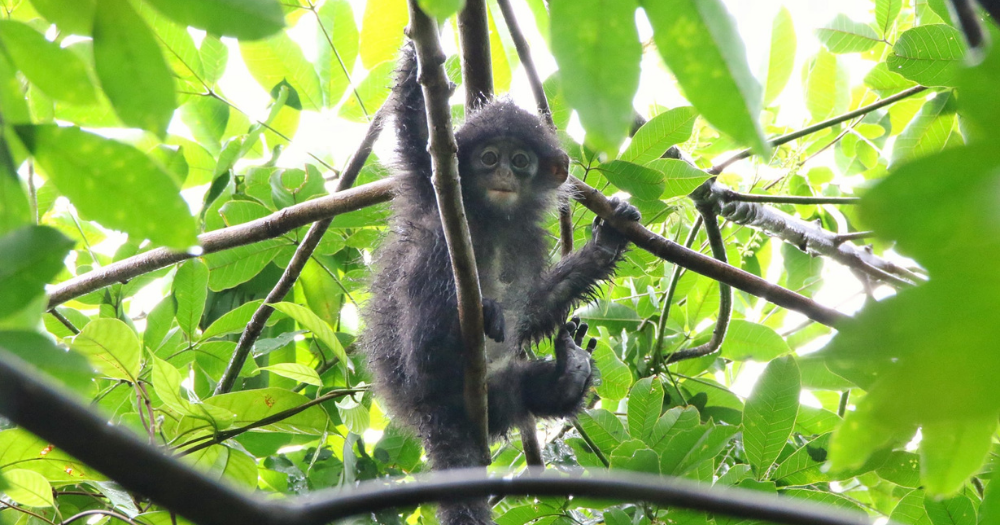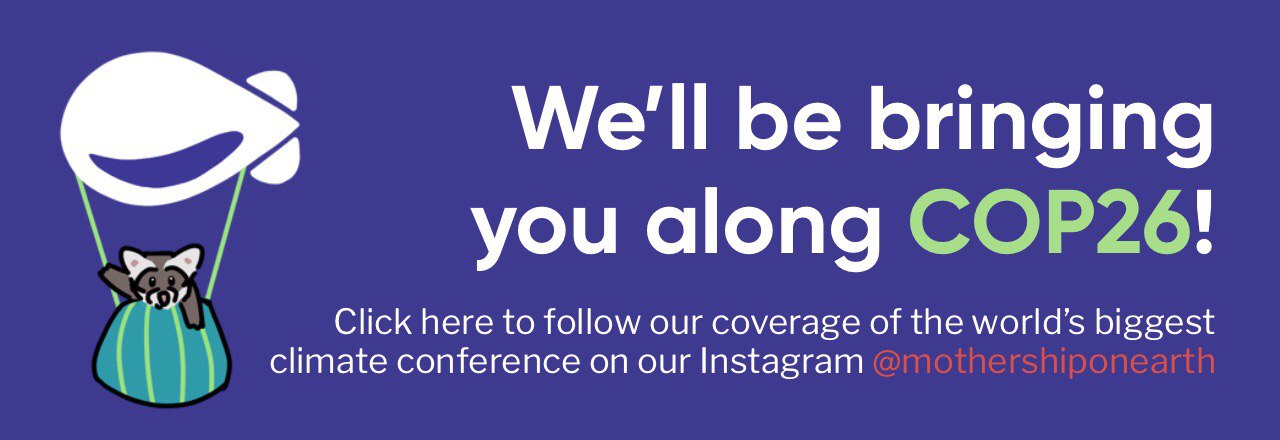Follow us on Telegram for the latest updates: https://t.me/mothershipsg
COMMENTARY: This pandemic has taught us a lesson on how humans are closely connected with nature.
While Singapore has made significant progress over the years with conservation and greening efforts, the author calls for more to be done to strike a better balance between protecting biodiversity and urban development — a pertinent problem in light of the looming climate crisis. Using some recent examples, the author highlights how young Singaporeans can be a driving force for change.
Andie Ang is an avid nature advocate and primatologist studying Raffles’ banded langurs in Singapore. She is also the president of Jane Goodall Institute of Singapore.
 Andie Ang and Jane Goodall. Photo by Gina Goh.
Andie Ang and Jane Goodall. Photo by Gina Goh.
In an urban city, roadkill is unavoidable – but recent accidents in Singapore have made it clear that we can do more to protect our native wildlife.
One such accident stands out in my memory. On 27 August 2021, our Raffles’ Banded Langur Working Group was alerted to a roadkill of a monkey on Upper Thomson Road opposite Thomson Nature Park. Sadly, the victim was a critically endangered Raffles’ banded langur, a three-year-old male whom we had been studying since he was born. We had endearingly named him Ultraboy. With his passing, there are now only 68 Raffles’ banded langurs left in Singapore.
Unfortunately, Ultraboy’s accident is not an isolated one. Tree-dwelling animals, like the langurs, do not typically move around on the ground. They do so particularly when there are gaps in the canopy, and in Singapore, these gaps are mostly manmade. Besides the arboreal creatures (i.e. those living in trees), terrestrial animals such as sambar deers, Sunda pangolins, and wild pigs have also found themselves in accidents, and on several highways in Singapore. As their remaining habitats continue to shrink to give way to development, the number of animal mortalities will only increase.
This issue is not unique to Singapore. Across the region, rapid and poorly-planned urbanisation continues to drive the loss of biodiversity and ecosystem functions, degrades the environment, and is a major cause of habitat loss. In Southeast Asia alone, it is projected that up to 42 per cent of species will be extinct by the end of this century. In addition, the global proportion of people living in urban areas will continue to rise and is projected to grow to 70 per cent in 2050 (from 53 per cent in 2020).
Ensuring a balance between urban living and nature conservation
While there is no way and no need to stop urban development from happening, we need to ensure a balance between urban living and nature conservation.
Even as we tackle the climate crisis for all life on earth, we also need to reassess and improve our relationship with nature. If we do not, up to half of Singapore’s wildlife species could vanish by the end of this century as well.
The global pandemic has taught us an important lesson regarding biodiversity: we are closely connected with nature.
The clean air and water that all living things, including us, rely on come from a healthy natural environment. Nature provides us with not only the tangible sustenance, but also assuagement and pleasure. It has triggered a ‘green awakening’ in Singapore as more have ventured into green spaces to appreciate nature’s intangible benefits.
Replacement is not the same as preservation
Over the past decade, our country has made significant progress to transform from a “Garden City” into a “City in a Garden”, culminating in the “City in Nature” aspiration announced in 2020.
In 2013, Singapore unveiled Southeast Asia’s first overpass for wildlife, Eco-Link@BKE, to restore the ecological connection between the Central Catchment Nature Reserve and Bukit Timah Nature Reserve. That is a commitment to reestablish the connectivity of our forest fragments.
The Green Plan 2030 also prioritises sustainability in urban development, with key targets including a national agenda to plant a million trees to mitigate the impact of climate crisis and to transition into cleaner energy.
For instance, the OneMillionTrees movement hopes to restore nature in our city by planting over a million trees across Singapore over the next 10 years.
However, replacement is not the same as preservation. Planting a million trees is not the same as keeping a million trees.
Planting trees should be a complement to the principal goal of protecting remaining habitats and wildlife. Regrettably, ecosystems and biodiversity are sorely missing from the Green Plan 2030 roadmap.
While our development plans have become more sensitive toward the environment and are actively including measures to minimise impacts on biodiversity, there is still a fundamental misunderstanding on the different shades of green.
The removal of centuries-old trees and associated microhabitats simply cannot be replaced by the planting of new trees, as seedlings require a substantial amount of time to cultivate into viable habitats for ecosystems to be established.
We must include our natural capital as an equal stakeholder right from the beginning. This means maintaining the interconnectedness of intact wild habitats and preserving the ecological roles of their inhabitants, both of which are essential to the integrity of a healthy ecosystem.
Restoring wild habitat connectivity will be critical in preventing species loss, and this includes the communities of seed-dispersers – such as the Raffles’ banded langur and the Long-tailed macaque, which need to move within and between our wild habitats as important drivers of forest regeneration.
I was encouraged to read the National Parks Board’s ecological profiling exercise, launched earlier this year to study the ecological profile of Singapore’s green spaces and to better strengthen their ecological connectivity.
Together, our voices can be the catalyst for positive change
Riding on this wave of hope is a healthy hike in voices from citizens and civil societies to advocate for the protection of some of our remaining green spaces, such as Dover Forest and Clementi Forest.
These soundscapes have proved to be catalysts for positive change, leading in one instance to the revision of the government’s plans for Dover Forest. Instead of zoning it entirely for residential use, a nature park will now be carved within the more diverse section of the forest after scientific studies and nature enthusiasts highlighted its conservation value.
Recently, at an Ecosperity Conversations webinar on ‘Reconnecting with Nature’, Dr. Jane Goodall spoke about the need for us to remain optimistic about the future. During the dialogue, Raha Islam, one of our Roots & Shoots Club Leaders, highlighted the role of young people in calling for change but was discouraged by the rate of destruction of our planet. Dr. Jane highlighted that biodiversity loss is not irreversible and action taken now can keep it from worsening. I very much second that.
As an individual, we can contribute our voices and actions. We can actively participate in discussions surrounding land use plans and developments, such as scrutinising and providing feedback on environmental impact assessments.
We can also volunteer as citizen scientists to monitor wildlife for research and conservation projects. Adopting appropriate and wildlife-friendly behaviours, be it within your residential estate or in and around nature areas, can contribute towards our coexistence with wildlife.
Simple acts of slowing down when driving near nature areas, not feeding wild animals, and appreciating our natural heritage can also go a long way.
Individually, we can all act in small ways to collectively bring about positive change.
Top image via Raffles’ Banded Langur/Facebook
If you like what you read, follow us on Facebook, Instagram, Twitter and Telegram to get the latest updates.

